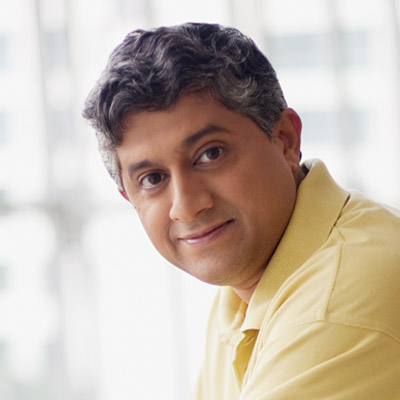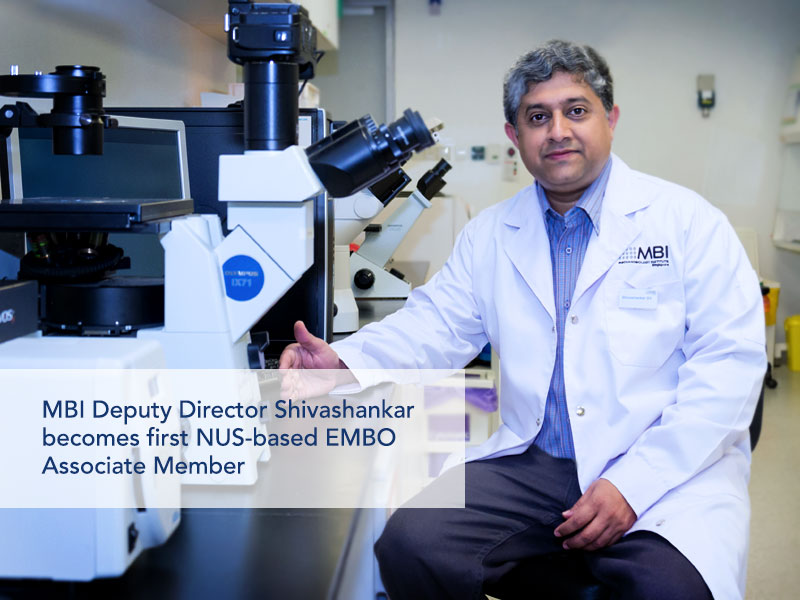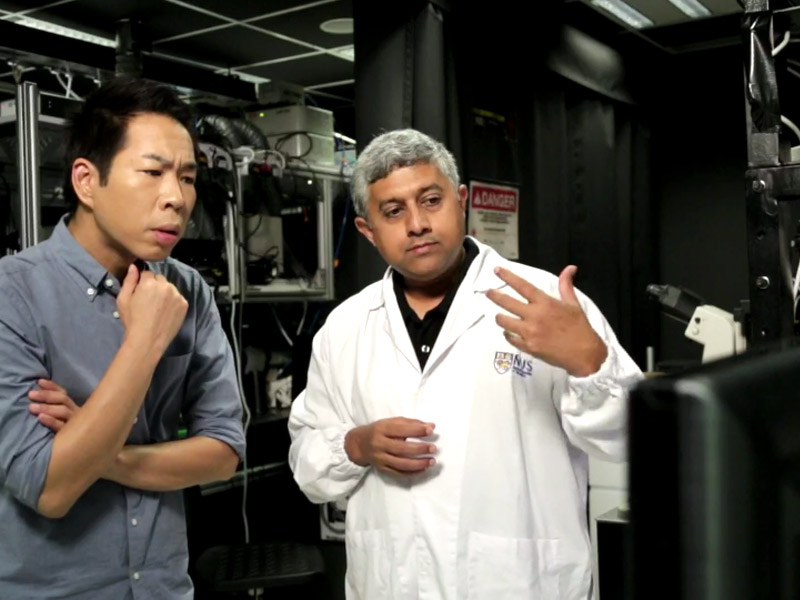Physically rewiring the genome
How somatic cells reprogram into stem cells under geometric constraints
STEVEN WOLF | MAY 2018 | Illustration by Melanie Lee
New research has revealed that mature cells can be reprogrammed into pluripotent stem cells by confining them to a defined geometric space, without any exposure to biochemical factors. This work, which was led by Prof GV Shivashankar, from the Mechanobiology Institute, National University of Singapore, and the FIRC Institute of Molecular Oncology (IFOM), Italy has been published in PNAS.

An artists impression showing the growth of a spheroid from a somatic cell on a confined substrate. Fibroblast cells are confined to rectangular areas and allowed to grow over 10 days, by which stage they form spherical cluster of cells.
Researchers turn mature cells into stem cells using mechanical cues alone
It has been over a decade since scientists first showed that mature cells can be reprogrammed in the lab to become stem cells capable of being grown into various cell types. In those early groundbreaking studies, researchers introduced external factors that reset the genomic programmes of the mature cells, essentially turning back the clock and returning them to an undifferentiated, or unspecialized state. The resultant cells, known as ‘induced pluripotent stem cells (iPSCs), could then be grown into different cell types for use in tissue repair, drug discovery and even to grow new organs for transplant. Importantly, these cells did not need to be harvested from embryos.
Mature cells can be reprogrammed, in vitro, into pluripotent stem cells in the absence of biochemical factors, simply by confining the cells to a defined area for growth.
However, in the decade that followed, a major obstacle in the use of iPSCs became evident. After differentiating into specialized cells, and being introduced into animals, the cells often formed tumours. To understand why this occurred, researchers turned their focus to understanding how stem cell differentiation and growth is regulated in the body, and in particular, how cells naturally revert to an immature stem cell-like state, or convert to another cell type, during development, or in tissue maintenance.
A key difference between the natural reprogramming of mature cells in the body versus the current methods used in the lab, is the requirement for external biochemical factors. To reprogramme mature cells, researchers had to introduce biochemical factors that target the genome and ultimately control which genes are expressed, and which are not. However, in the body, genomic programmes are highly regulated, and the cells that undergo reprogramming to an unspecialized state, or convert to another cell type, do so in the absence of additional or modified biochemical factors.
Now in a major development, researchers from the Mechanobiology Institute, National University of Singapore and the FIRC Institute of Molecular Oncology (IFOM), Italy, have shown that mature cells can be reprogrammed, in vitro, into pluripotent stem cells in the absence of biochemical factors, simply by confining the cells to a defined area for growth.
As shown by Roy et al, when fibroblast cells (a type of mature cell found in connective tissue), were confined to rectangular areas, they quickly assumed the shape of the substrate. Based on previous work from the Shivashankar lab, this indicated that the cells were measuring and responding to the physical properties of their environment, and conveying this information to the nucleus where DNA packaging and genome programmes would adapt accordingly. The team grew the cells over 10 days, by which stage they had formed spherical clusters of cells. Genetic analysis of the cells within these clusters revealed that by the sixth day, specific characteristics of chromatin (the condensed form of packaged DNA) normally associated with mature fibroblasts, had been lost. By the tenth day, the cells expressed genes normally associated with embryonic stem cells (ESCs) and iPSCs. By confining the mature cells for an extended period of time, the transition from mature fibroblasts, to pluripotent stem cells was able to complete.
To confirm that the fibroblasts had indeed been reprogrammed into stem cells, the researchers then directed their growth, with high efficiency, into two different cell types; endoderm and neuronal ectoderm. Some cells were also directed back into fibroblasts.
The mechanical conditions used in the study are reflective of the transient geometric constraints that cells can be exposed to in the body. For example, during development, the establishment of geometric patterns and niches are essential in the formation of functional tissues and organs. Similarly, when tissue is damaged, either through injury or disease, cells will experience sudden alterations to their environment. In each case, mature cells may revert back to a pluripotent, stem cell-like state, before being redeployed as specialized cells for the repair or maintenance of the tissue.
It is well established that confining stem cells to defined geometric patterns and substrate properties can direct their differentiation into specialized cells. This is the first time however that mechanical cues have been shown to reset the genomic programmes of mature cells, and return them to a pluripotent state. The use of geometric constraints to reprogramme mature cells may better reflect the process occurring naturally within the body and more importantly, now allows researchers to generate stem cells without the use of biochemical factors, which can have long term effects on the cells genetics.
It is expected that these findings will usher in a new generation of stem cell technologies for tissue engineering and regenerative medicine that minimizes the negative effects of genomic manipulation and improves the effectiveness of cell reprogramming.









